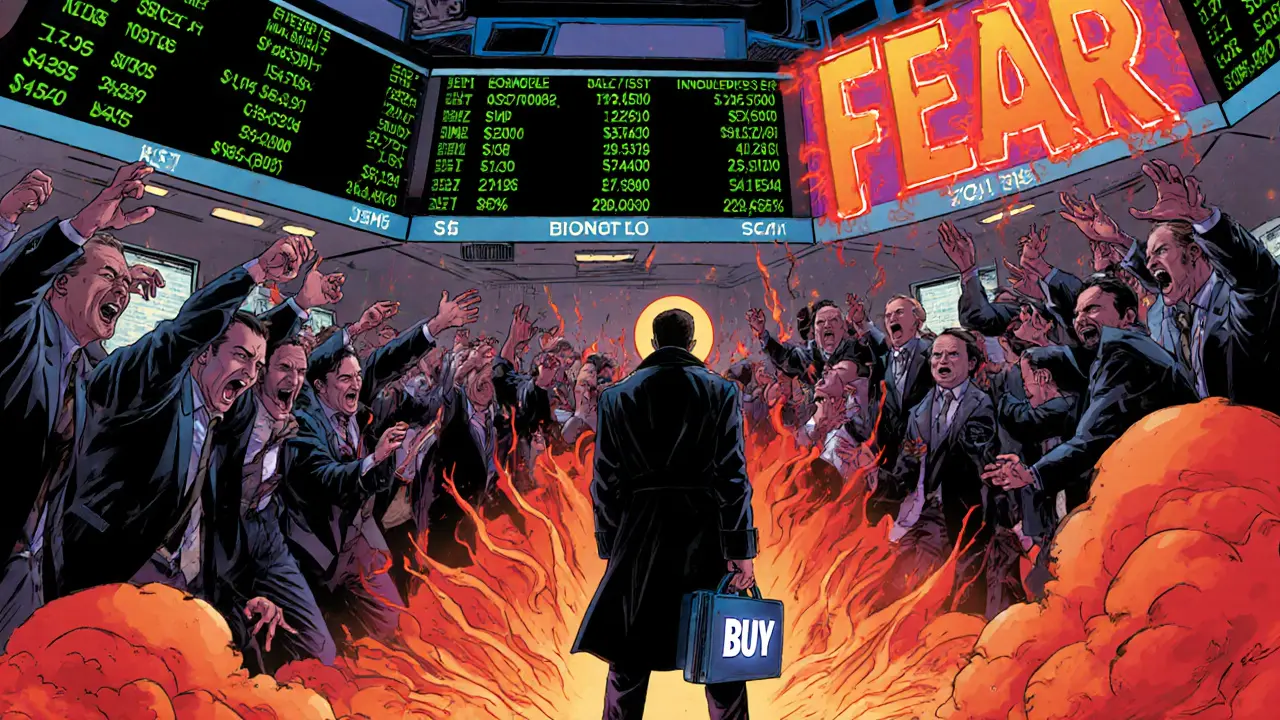Contrarian Sentiment Investing: Turn Fear and Greed into Profit
Learn how to profit from market fear and greed using contrarian sentiment investing. Discover key indicators, risk controls, tools, and a step‑by‑step trade example.
When talking about market fear, the anxiety investors feel during sharp price drops or sudden regulatory news, you’re actually looking at a mix of psychology and data. Also known as panic selling, it can turn a normal correction into a cascade of sell orders. Understanding why this happens helps you stay ahead instead of reacting late. Market fear isn’t just a feeling—it’s a measurable force that can reshape entire trading days.
One of the most common triggers is volatility, the rapid price swings that make it hard to predict short‑term moves. High volatility raises the odds of unexpected losses, which fuels panic. In practice, a 5% swing in Bitcoin can cause a ripple across altcoins, forcing even seasoned traders to question their positions. Another driver is regulatory uncertainty, the lack of clear rules that leaves markets guessing about future compliance costs. When a major exchange faces a new compliance deadline, rumors spread faster than official statements, amplifying fear.
Because fear is contagious, investors often look for ways to protect themselves. That’s where risk management, strategies like stop‑loss orders, position sizing and hedging comes into play. Effective risk management can dampen the emotional response by setting clear loss thresholds before a trade even opens. For example, using a 2% portfolio‑wide stop‑loss on a volatile meme coin can prevent a single bad trade from wiping out weeks of gains.
Even with solid risk controls, many traders still feel exposed during market turbulence. Diversification offers a practical antidote. By spreading capital across different asset classes, such as large‑cap cryptos, stablecoins, and even traditional stocks, you reduce the impact of any single sector’s panic. A balanced portfolio might hold 40% Bitcoin, 30% Ethereum, 20% stablecoins, and 10% equities, smoothing out wild swings and giving you mental breathing room when fear spikes.
These four elements—volatility, regulatory uncertainty, risk management, and diversification—form a web of cause and effect. Market fear encompasses volatility; volatility requires risk management; regulatory uncertainty influences market fear; diversification reduces market fear; and risk management mitigates the impact of both volatility and regulatory shocks. Together they create a roadmap for anyone wanting to navigate scary market moments with confidence.
Below you’ll find a curated set of articles that dig deeper into each of these topics, from exchange reviews that highlight risk features to guides on handling airdrop hype without losing sleep. Dive in to see practical examples, data‑driven insights, and step‑by‑step tactics that can help you turn fear into a manageable part of your trading plan.

Learn how to profit from market fear and greed using contrarian sentiment investing. Discover key indicators, risk controls, tools, and a step‑by‑step trade example.